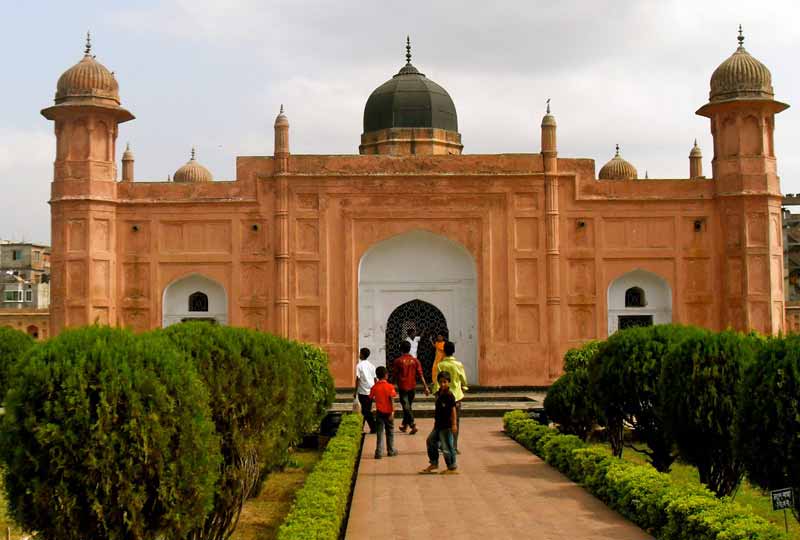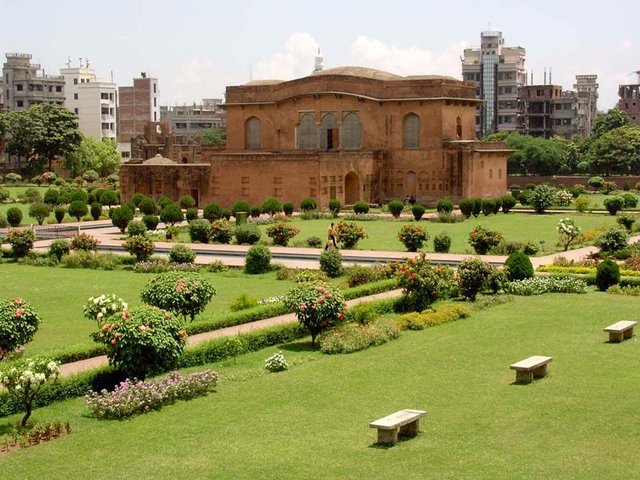Bangladesh might look like a relatively young nation, but it has a rich history which offers you to satisfy your voyage on archaic sites.
The colonial British rule and the liberation war have made Bangladesh a must visit place for the expedition lovers to witness some marvelous archaeological works of the ancient time.
Here is a platonic journey through the top eight historical places in Bangladesh.
This famous historic place is situated on the northeast side of Dhaka, Bangladesh. This was built during the Mughal rule, on the seventeenth century.
Lalbagh fort is believed to be an incomplete Mughal fort structure which was started in 1678 AD by the Mughal Subahdar Muhammad Azam Shah. As the structure applies to the fine architectural work of that period, it has four main structures which are a Diwan-i-Aam, a water tank in its eastern side, the tomb of Bibi Pari and the Lalbagh Fort Mosque. During the nineteenth century, this fort grew up to be a place of revolution by the local soldiers, against the colonial British rule.
The best time to visit this place is November to March, a little wintery environment, paints colors to the fort and its lush green garden.

History
Mughal prince Muhammad Azam, third son of Aurangzeb started the work of the fort in 1678 during his vice-royalty in Bengal. He stayed in Bengal for 15 months. The fort remained incomplete when he was called away by his father Aurangzeb.
Shaista Khan was the new subahdar of Dhaka in that time, and he did not complete the fort. In 1684, the daughter of Shaista Khan named Iran Dukht Pari Bibi died there. After her death, he started to think the fort as unlucky and left the structure incomplete. Among the three major parts of Lalbagh Fort, one is the tomb of Pari Bibi.
After Shaista Khan left Dhaka, it lost its popularity. The main cause was that the capital was moved from Dhaka to Murshidabad. After the end of the royal Mughal period, the fort became abandoned. In 1844, the area acquired its name as Lalbagh replacing Aurangabad, and the fort became Lalbagh Fort.
.jpg)
Stories
From the time of construction till date, various myths have revolved around the fort. Among all the historical stories and debates, it is widely believed that Lalbagh Fort stands as a monument of the unfulfilled dreams of Prince Muhammad Azam, beloved son of Emperor Aurangzeb. In the mid 17th century, he was serving as the Viceroy of Bengal and began the construction of the impressive Lalbagh Fort complex.
Therefore, the popular stories about the fort begin. Before the construction was finished, Prince Azam was called back to his father, to assist in the war against the Marathas. Legend says after the Mughal prince departed, Shaista Khan continued with building the project, but upon the untimely death of his much-loved daughter Iran-Dukht, warmly known as Pari Bibi, the construction was stopped. Bibi was engaged to Prince Azam at the time of her death.
There are also legends and debates about the identity of Pari Bibi. Few researchers claim she was a nine-year-old Ahom princess. Mir Jumals Ahom's expedition brought a war adjoining the Garo hills. He took the daughter of Ahom Raja to compel him for the full execution of the previous peace treaty. Later, the emperor made her convert to Islam and married her off to prince Azam. However, overshadowing all the debates, people now believe that she was the loving daughter of Nawab Shaista Khan.

Nice place
Downvoting a post can decrease pending rewards and make it less visible. Common reasons:
Submit
Hi! I am a robot. I just upvoted you! I found similar content that readers might be interested in:
https://en.wikipedia.org/wiki/Lalbagh_Fort
Downvoting a post can decrease pending rewards and make it less visible. Common reasons:
Submit
nice and historic place.
Downvoting a post can decrease pending rewards and make it less visible. Common reasons:
Submit